Motorola
Motorola One: Android One and good battery life
Aprox. 312€ - see price -
See specificationsAfter HTC, Xiaomi or Nokia, it is now Motorola's turn to offer its smartphone with Android One. It therefore incorporates an (almost) stock version of Android and performance promising a mid-range without frills. And without flavor? Answer in this test.
Our review
Presentation
After a Moto X4 reserved in the United States, Motorola now offers a second smartphone with Android One. And this time, it is available to the European and therefore French public. Thanks to this new terminal, the American manufacturer wishes to expand its preferred sector, the mid-range. In its sleeve, several assets, of course its almost pure operating system, its promises of regular updates and a beautiful autonomy.
Marketed at € 299, it faces the Honor Play or the Huawei P Smart +. But before facing them, it must first of all stand out from competitors with an increasingly aggressive offer, around 200 €, Redmi Note 5 in mind.
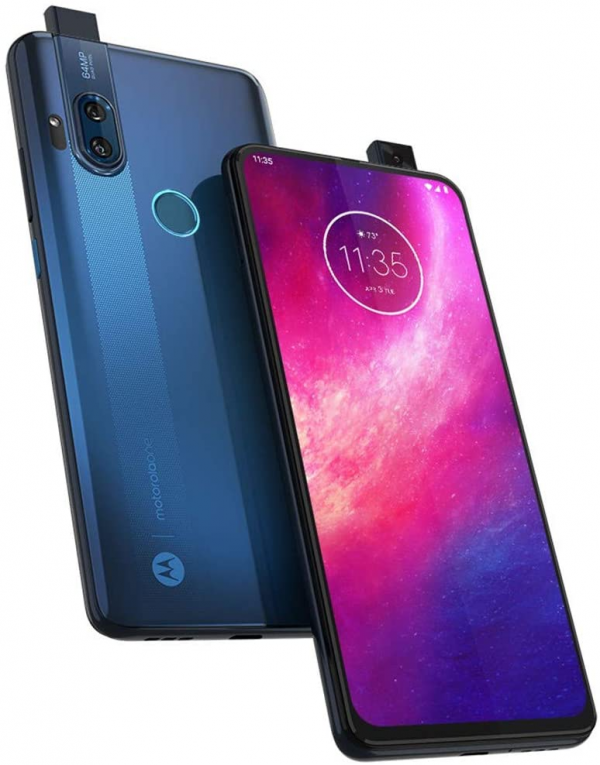
Ergonomics and design
For its Motorola One, the manufacturer offers a sober design. The 5.9 inch panel occupies 80% of the front of the smartphone and is overlooked by a large notch housing a photo module, a speaker and a light sensor. Still too thick, the side borders prevent the terminal from delivering a truly premium impression, like the iPhone XR.
In terms of handling, Motorola is doing a good job here again. The side buttons (volume and lock), located on the right edge, are easily accessible. This is also the case with the fingerprint sensor on the back, which easily falls under the finger.
On its lower edge, the Motorola One is equipped with a USB-C connector. An always appreciable effort on this price range. But that doesn't mean that the 3.5 mm mini-jack plug has disappeared from circulation. This is found on the opposite side, on the upper edge of the smartphone. Then turn to the left edge to find the microSD port that can accommodate cards up to 256 GB to expand the 64 GB of internal memory. Note also that 11 GB are immediately dedicated to Android. Finally, like most of its competitors, the Motorola One is not waterproof.
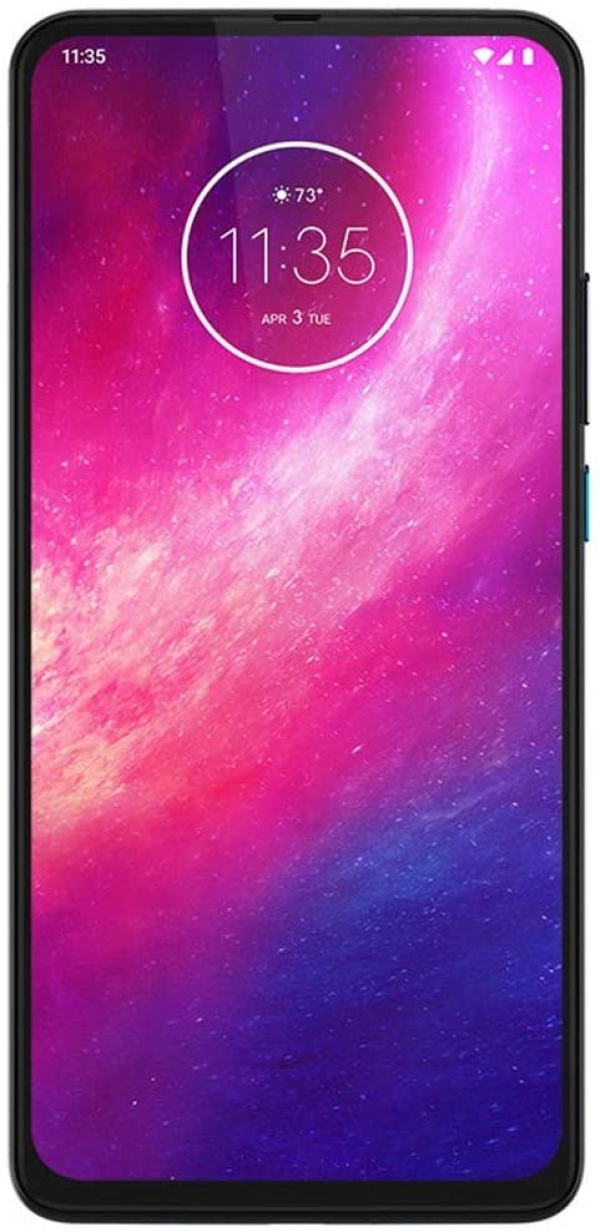
Screen
The Motorola One 5.9 inch IPS panel offers a 19: 9 aspect ratio and displays in HD + (720 x 1520 px). Enough to offer a resolution of 287 ppi. A most limited value for a smartphone from the end of 2018. According to a spokesperson for the manufacturer, it was sacrificed on the altar of autonomy.
Despite this, the screen of the Motorola One still shows good quality. It is however necessary to make a check by the parameters to deliver its full potential. By venturing into the Display section, a Color Mode tab is available. After selecting this parameter, opt for "Normal colors" and a "Warm" temperature. That done, the screen offers an excellent contrast ratio for IPS (1,893: 1) and a good average Delta E (3.3) despite fairly unrealistic hues (green, red, blue). The color temperature is, unfortunately, a bit extreme, since going down to 5,979 K, it displays a rendering slightly too hot, compared to the ideal of 6,500 K.
The Motorola One panel is capped at 515 cd / m². Enough to offer good readability even in direct sunlight. Especially since it is well helped by a fairly limited reflectance (13%). Night reading could turn out to be a little more complex since the screen only goes down to 6.1 cd / m². Enough to sting the eyes in the dark. Finally, in terms of performance, the screen is rather average with a high tactile delay (127 ms) and a long afterglow (20 ms).
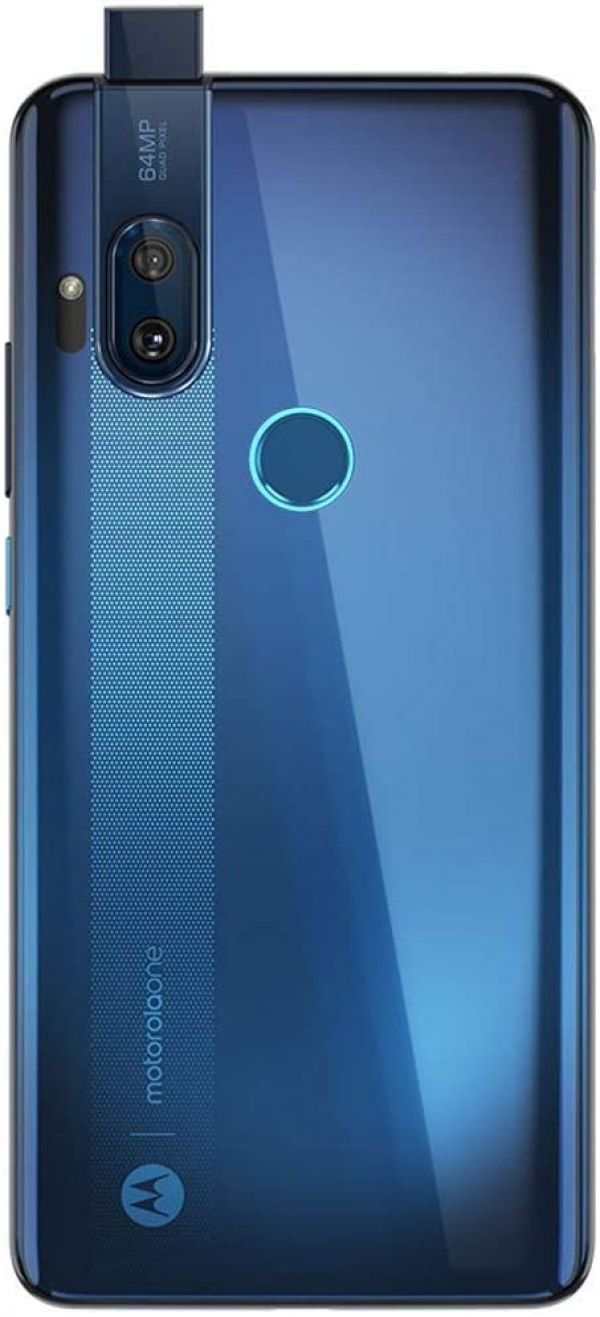
Performances
It's a SoC starting to date that takes care of operating the Motorola One. It is a Snapdragon 625 chip. Enough to offer a fairly fluid experience of Android 8.1, without competing in reactivity. However, juggling between applications is largely possible without disturbing the terminal. The smartphone is also paying the luxury of not losing your cool. It only goes up to 34 ° C and very localized, even after filming in Full HD for more than 10 minutes.
When launching a game, the Adreno 506 chip takes over. It allows you to play the most demanding 3D softs, provided you make sacrifices on graphics and fluidity.
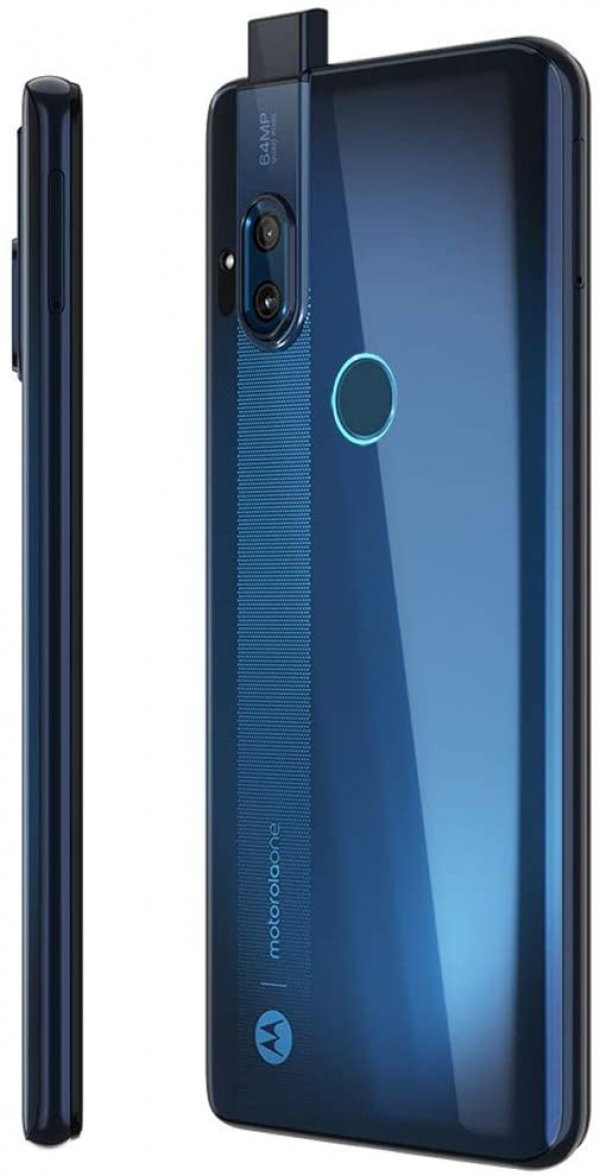
Audio
Located on the upper edge of the Motorola One, the 3.5 mm mini-jack connection is particularly average. And this, despite excellent performance in terms of distortion and dynamic range. The plug, on the other hand, is strongly affected by its crosstalk and the power output. It is far too weak to hold up against a helmet that consumes a little energy.
As for the speaker, positioned on the lower edge, it is also quite average, with a nice power, but clarity to review.
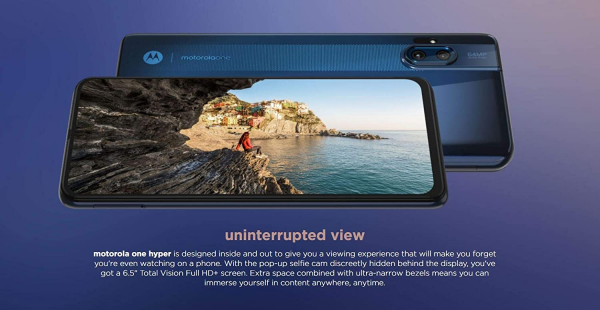
Photo
On the back, the Motorola One is equipped with a double photo module. The main module is equipped with a 13 Mpx sensor and a lens opening to f / 2.0 while the secondary (2 Mpx + f / 2.4) is dedicated to depth. If his application is very fluid and customizable, the recorded shots do not pay tribute to him. It must be said, the Motorola One is far from being a photophone.
In photos taken in broad daylight, the smartphone does not do too badly. The pictures are accentuated. The contrasts are also exaggerated. The whole also suffering from a too present smoothing, drowning some details.
In photos taken in low light, things get complicated for the Motorola One. Smoothing takes the details with it. The colors are also lost offering a cliché not very bright.
At the front, it's a simple module that acts as a selfie machine. It is composed of an 8 MP sensor and a lens opening to f / 2.2. It offers fairly average photos with a limited amount of detail. However, it should still be noted that the rendering is not so smooth.
Finally, the Motorola One is capable of shooting in 4K and 30 fps and delivers videos which have the merit of being stable.
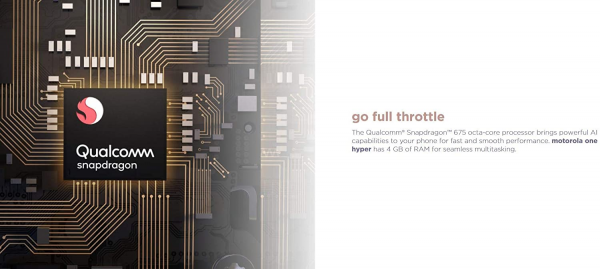
Autonomy
Despite a battery of "only" 3000 mAh, the Motorola One achieves good performance in autonomy. In our SmartViser in-house test, which simulates classic smartphone use with sending SMS, calls and playing videos and music, the terminal struck with M still resisted for 18 h 26 min before reaching the fateful bar of 15%. In real conditions, this corresponds to approximately two and a half days of use. Enough to survive without an external battery.
Note that it takes just over 1 h 30 min to fully charge the battery with the supplied block.

Conclusion
For 300 €, the Motorola One might have been a good smartphone a year ago. But since then, Xiaomi has arrived and pulled prices down. Result of the races, despite its excellent autonomy and its rather good screen (for IPS), it offers too average performance to compete with its new competitors costing € 100 cheaper, like the Xiaomi Redmi Note 5.
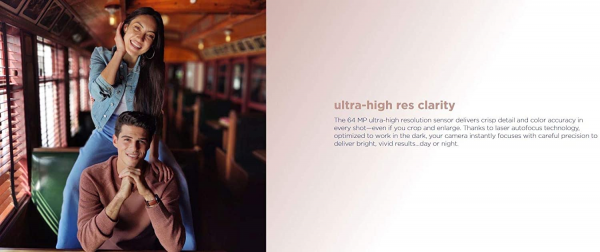
Specifications
Reviews

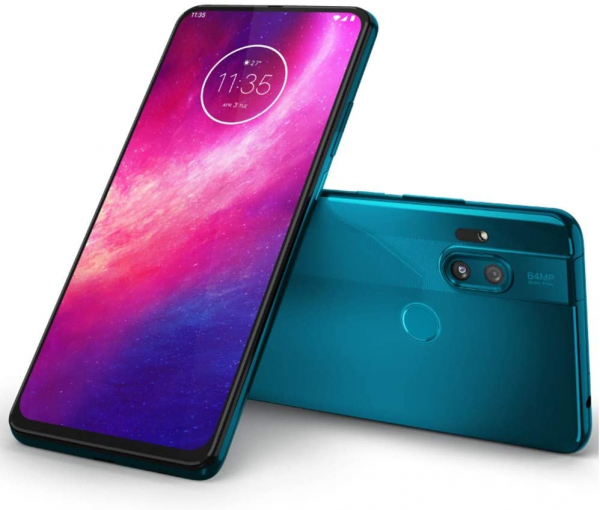
No Regrets!
I don't like to leave reviews, but this phone is worth taking the time to review. My wife and I have owned several Moto phones and have been very happy. We like Moto because per the local cell phone repair business the technician stated that “The Moto and the fruit company phones are the most repairable”.
Some of the Motos we have owned included several G series and the Moto X Pure Edition. While the Moto X Pure was our favorite due to the amazing camera, durable build quality and a pure Android experience, the model is now five years old, an eternity for cell phones.
A quick note about our old Moto phones is that after a replacement (new) phone is set up, the old phone retires to some other use such as a Roku Remote or an occasional viewing device for the kids.
Now to the Moto One Hyper, the phone is simply amazing. The performance totally exceeds any of my expectations. The camera is breathtaking, and the battery goes for two days for normal adult use. Battery life is important to me because I'm putting half the battery charge cycles on this phone so I'm optimistic that the battery will last twice as long before it begins to start showing age.
Moto Turbo Charging has been great (when needed) with my old phones and I expect nothing different from this phone. I can't think of a use to upgrade the charger to the more powerful charger.
The Moto One Hyper is a little taller and heavier than our previous phones. For the first couple of hours, it felt a little awkward, but now I don't notice it whatsoever.
The screen is excellent. It's very nice not to have a notch or cutout, it's all screen.
The “action” of the popup camera is much more robust than I expected. I'm not worried about this failing.
A few quick notes on my setup:
1. Installed at SanDisk Extreme 256GB V30 Micro SD card. Be sure the SD you buy has a V30 rating or the phone will issue a warning that the card is too slow and could impact performance.
2. Installed a Qoosea Screen protector (perfect fit).
3. The phone comes with a good case. I choose to install a Pulen Case
4. Changed the wallpaper to black
5. Turned off animations
6. In system navigation turned on “3-button navigation”
7. Within the “Moto” app under “Moto Actions” “Quick Capture” “Settings” and changed selfie to rear.
I hope this information was helpful.
Pretty good value phone
Moto One Hyper review after 1 full week:
My previous phone Samsung S8 Active, still working unable to get Android updates past 8 and security updates from June 2018 and other software issues related to updates. This is the last 'Flagship' phone I ever buy.
I am on AT&T and it has worked perfectly for calls and texting, plug and play.
I figured a phone for $ 315 would suffice. Even if it lasts 10 months it's a better value than the current 'Flagship' offerings from Samsung and LG (AT&T only options). It's hard (for me) to see the differences between the actual phone and Android differences since coming from Android 8 to 10. So, some issues (minor) I have had are related to that rather than the phone.
The physical phone is great. Not too heavy, not too large and battery life (have not to get 2 full days out of charge yet) and recharge is great with 45W hyper charger. I'll have to practice using the camera b / c the pics on old phone appear to be better, which does not make sense to me. The screen is good, lacks some fullness of colors but certainly adequate.
The phone came with clear rubber case that I replaced with an Osophter brand that is really nice. One thing to note is there is not a lot of selection of accessories for this phone. I also installed a generic screen protector. I highly recommend getting a case and screen protector since the phone case is plastic and the screen is only Gorilla 3.
To sum it up, a good phone worth the money. If you are not a superphone user and stressing it out it will most likely be just fine for your needs
******************* 1 month update
So far so good. Being stuck at home I have not really used it much while not using WIFI but all is good so far.
One disappointment, I thought I researched this before I purchased, but it does not support WIFI calling or VoLTE. Kind of a big deal for me since my office (have not been there since I bought) has very bad cell reception ... ugh. Camera still kinda wonky for me but still working on it.
Amazing phone when it has service - doesn't work rural
There's so much that can be said about this awesome phone. I spent some time watching tons of YouTube videos trying to find the best bang for the buck especially camera quality wise.
This phone is definitely that! I'm in love with the pictures this phone takes and movies are so nice to watch on here.
Issue: it doesn't work where I live. No it is not my cell service. My kids phone including my previous Motorola e5 + work just fine same Sim card no changes. I spent days trying to talk to both Motorola and Amazon to figure it out and no one could really help me except offer a refund which is why this gets only 3 stars. I live up in the mountains about 1000 feet elevation but it's hard not being able to get calls from my kids or work when I'm at home. I really don't want to return this phone but unfortunately as much as I'm struggling to say goodbye I'm trying to find a replacement I can love atleast almost as much.
Get it if you live in the city and not somewhere rural unless they fix whatever band issue or whatever problem. Once figuring out how to use it it's such an enjoyable phone.
I will try to attach a few photos I've taken!